One of the most common materials in ancient times and today is goldIn the Mendeleev Table, it is among the other precious metals (iridium, platinum, silverpalladium, etc.). It is distinguished from them not only by its formula and characteristics, but also by its value and origin. However, the main peculiarity of Au is its contradictory properties. For example, the hardness of gold on the Mohs scale is one of the lowest, but its value is high. Despite such subtleties, products made of gold alloy are used extensively enough, and the metal has been mined for centuries (the history of gold goes back many millennia). Au continues to be formed to this day.
Gold Au - aurum (aurum): etymology of the word
The name of the metal aurum reads in Latin as "aurum" (spelled the same way it is heard/pronounced). The abbreviated designation (the letters Au are used) is common. This is the variant used in chemistry for formulas of substances, compounds. It is an element of the periodic table of Mendeleev and belongs to the 6th period.
The main distinguishing features of gold are its yellow color, the uncharacteristic sound of other precious metals when struck, and its softness. If you want to know how gold is called in the Mendeleev table, look for the element number 79.
The etymology of the word by which the precious metal is called includes various decipherments of meaning:
- The old Slavic version is based on the word "zlato";
- The Lithuanian meaning of geltonas is "yellow;
- The Latin name for gold in translation corresponds to distinctive color of the precious metal is "yellow.
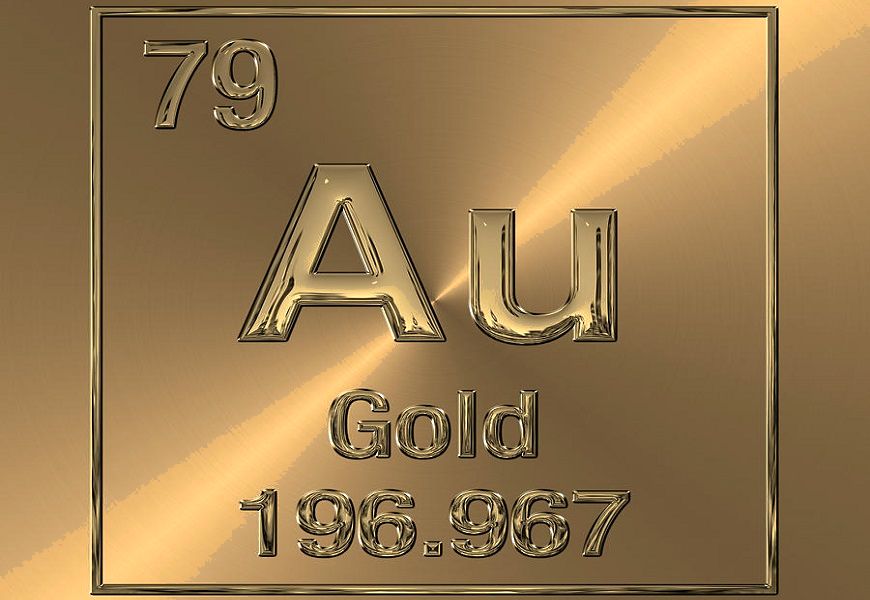
In addition, aurum is associated with the sun, so in ancient times a corresponding sign/symbol was used to denote such a metal. As a continuation of the logical chain, the relationship between the color Au and the sun is noted. For this reason, among the facts about gold in many countries we can find the only possible meaning of its name. This color is yellow. Another explanation is the Proto-Indo-European root "yellow, green, bright".
The history of metal
There are quite a few theories explaining what gold is, where it formed, and why it ended up in the Earth's crust and the planet's core. Earlier it was accepted that Au in the universe is a consequence of processes in the structure of stars (nucleosynthesis). However, later there were new assumptions, from where the history of gold originates. Thus, there is a theory that the metal particles are a consequence of the destruction of neutron stars.
Aurum is notable for its substantial weight. Even after decay, the particles will fall rapidly. They pass through the atmosphere along with the asteroids (like a late heavy bombardment, in times corresponding to 3.8 billion years ago). This is the likely pathway for the precious metal to enter the crust of the planet. We can speculate where gold came from on Earth. The dust left after the explosion of a star gradually condenses. In this form it gets to the planet.
If you wonder where gold comes from in nature, you should consider that a significant portion of it is found in the Earth's core. There the metal got there, again, due to its considerable weight. This is one of the main signs to determine whether an item made of aurum is original (they are always heavier than many others: silver, brass). In addition, other theories are being constructed as to how gold appeared on Earth, and ended up in the nucleus. It is believed to be the result of high temperatures when the planet was in a molten state.
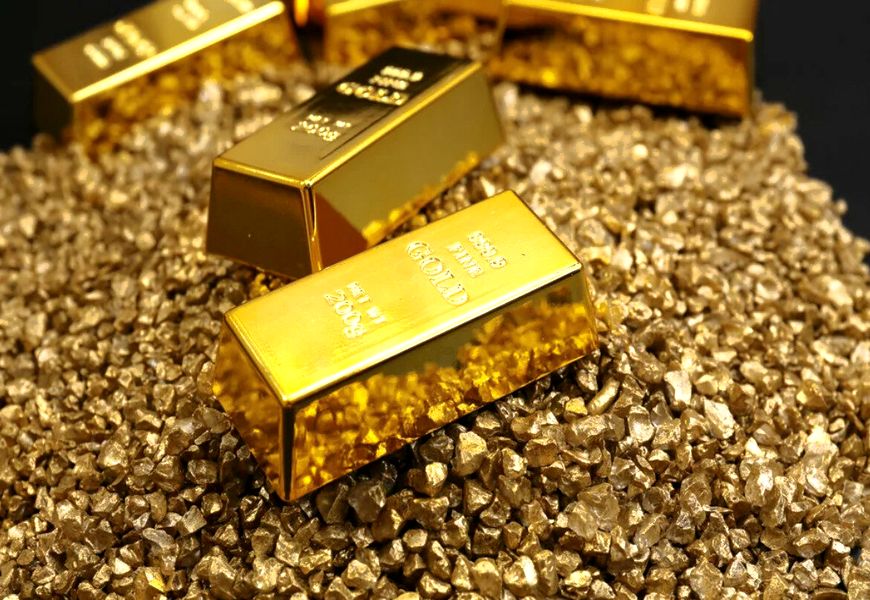
However, the theories on the basis of which assumptions are made about where gold came from are not always grounded. For example, the version that stardust (gold) falls into outer space and then settles on Earth is struck by the inconsistency of facts, for example, there is no information that such processes actually develop. Scientists do not yet give specific data, but make statements that such assumptions (regarding falling gold dust) are indirect. There is insufficient information, and it is impossible to confirm the theory because of the peculiarities of satellite spectroscopes.
Interesting: Aurum is found in the Earth's crust, mantle, and core of the planet, as well as in water. It is believed that 1 km2 contains 1 kg of precious metal.
Place 79 in the periodic table of Mendeleev. History of discovery of the element
Au is the element on the table that is found at number 79. The description begins by highlighting the features of the metal:
- belongs to the first group of the table;
- represents heavy metals;
- Due to the properties, it is possible to learn all about gold, for example, the precious metal does not interact with nonmetals, with the exception of halogens.
Aurum is considered to be the oldest metal. It was discovered first, and it happened about 11 thousand years ago. The oldest known gold is Aurum, which was discovered about 11,000 years ago, and is believed to be the oldest, which occurred about 11,000 years ago. In the past, objects made of gold were considered the most valuable, as the material was given the status of the "king of metals".
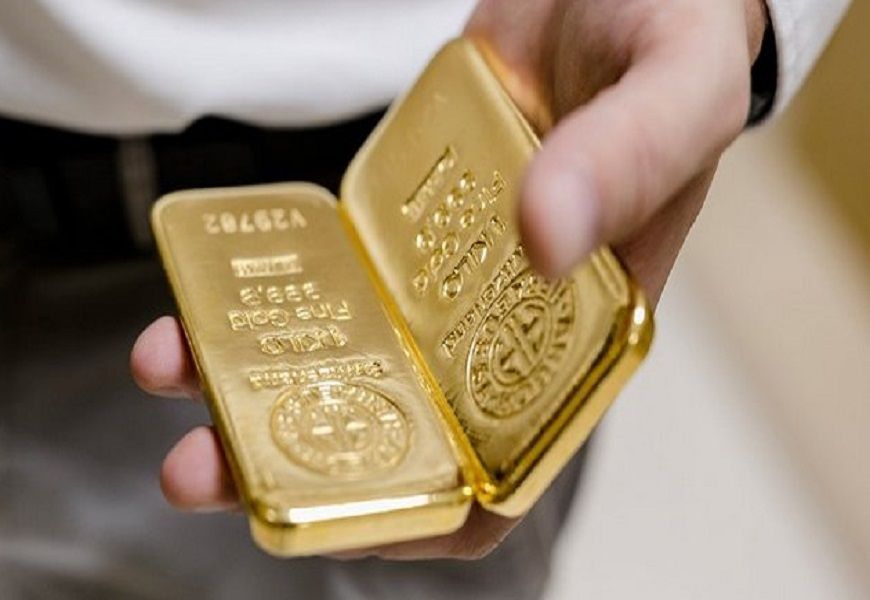
As new fields were developed in the old days, sources of oil were discovered. However, previously there was not enough information about this mineral. Oil was not popular, its properties had not yet been discovered, and the degree of its usefulness for mankind had not yet been assessed. And so they were looking for, first of all, aurum. Oil and associated minerals - were found by chance during the development of the soil.
Gradually gold mining began to gain momentum. In the search for Au, during the development of lands where no one had ever been before, new deposits were discovered, as the reserves of the precious metal gradually dried up. To replenish the reserves they used to visit other territories. It is not known who discovered gold, as it is difficult to trace the chain of events. It was discovered by people who lived many thousands of years ago. The history of the discovery of gold involves the need to take into account all the references, and they occur in different centuries and in different territories.
Gold in nature: primary and secondary deposits
If you're wondering how gold is formed in nature, there are 2 ways to look at it:
- primary or indigenous;
- secondary (scattered deposits).
The first of the options is native gold. This is the result of magmatic processes, which confirms the content of the largest amount of gold in the Earth's core. The precious metal appears on the surface due to volcanic eruptions.
And the composition of gold is unusual - most often it is a pure substance.
Its formation is caused by the melting process, when the fusible compounds in the liquid lava are gradually cooled (when the mass comes to the surface). As a result, the extraneous compounds (including salt) are destroyed, leaving a pure aurum, which is similar to a stone, but with different properties. The advantage of metal is its homogeneous structure.
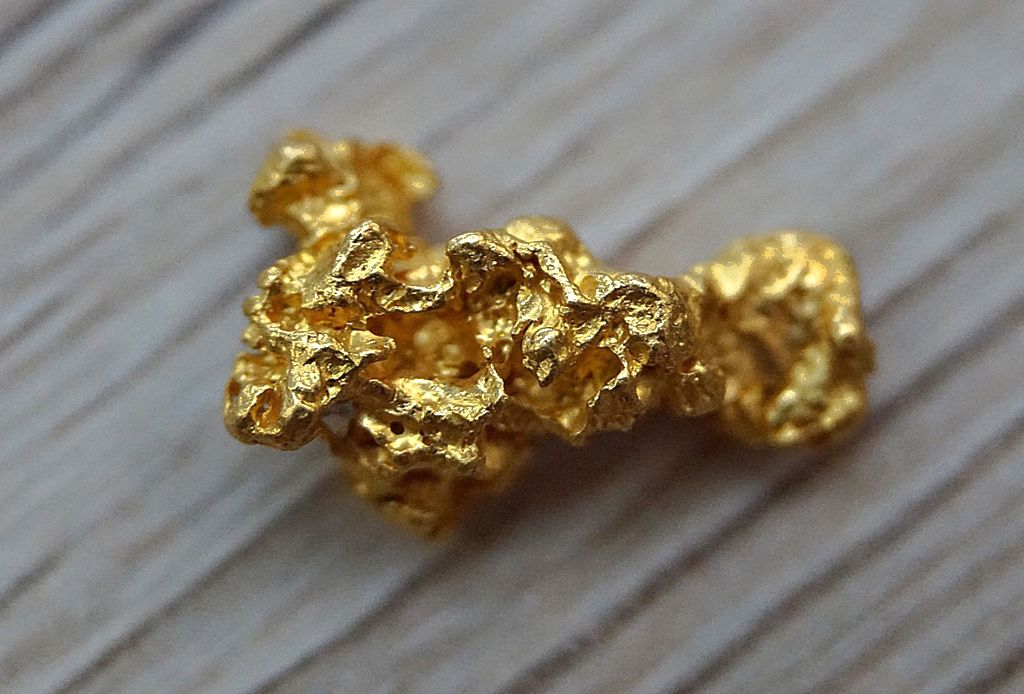
The development of secondary deposits is the main way to precious metal mining. Such gold is part of various minerals. Not all of the Au contained in the magma forms nuggets, a considerable amount remains mixed. With this in mind, the properties of gold may vary. The minerals and compounds that make up the precious mixture:
- quartz;
- iron;
- zinc and lead sulfide;
- copper pyrrhotite.
Aurum is most often found together with quartz, silver and copper. Another popular variant is a mixture with platinum. Emerging from the Earth's core or crust, the precious metals are fused, so Au is most often found in mineral deposits, other metals and substances.
Moreover, the aurum is contained in the form of fine particles, so it is necessary to use special means to search for and purify the precious metal from its additives. These are loose deposits - a consequence of the separation of aurum from most of the impurities due to its properties (e.g. substantial mass).
Gold in chemistry: chemical and physical properties, formula, electronic configuration, crystal lattice, what it consists of, mass of the element
The chemical formula of gold is a vague concept, as it depends on the composition of the material. The metal combines with small amounts of substances, impurities, and compounds. As a result, the physical properties of gold change as well. The main characteristics, parameters of the precious metal:
- the empirical formula for gold is Au;
- crystal lattice - cubic, type - face-centered;
- The thermal conductivity of metal is 318 W/m*K;
- density is 19.3 g/cm3;
- the metal is opaque;
- there is no smell;
- electronic configuration - {Che} 4f145d106S1;
- melting point - 1064.18 ° C;
- atomic (molar) mass is 196.966569 a.u.m. (g/mol).

Aurum is a soft metal. Among the main properties of gold, there is a parameter such as the hardness index. Different methods are used to determine its hardness:
- Mohs score is 2.5;
- by Vickers - 2.16 GPa;
- Brinnel - 2.45 GPa.
Reaction to acids
In addition to those listed, the properties of gold that allow us to evaluate its ability to interact with other components and substances are also noted. Aurum is a conditionally inert material (in its pure form). It may be called such because there are few substances with which Au reacts. They include some acids. Because of this, the metal is called noble.
In comparison, most others oxidize and lose their properties. In this respect, aurum is superior to other materials. In addition, selenic acid at high temperatures (+200 degrees) promotes the dissolution of Au.
The precious metal is exposed to chloric acid (at room temperature), which produces chlorine oxide and gold perchlorate.
Oxidation degree and interaction with halogens
Aurum reacts to oxygen, not only to aggressive substances. The degree of oxidation can be different, which also depends on the substance with which the intended chemical reaction may occur.
In addition, the compounds that were formed in this process tend to be reduced, while others, on the contrary, contribute to the complete dissolution of the precious metal.
Au interacts with halogens. And the changes occur much faster than when combining with other substances. In comparison, aurum does not react directly with oxygen, but is affected by it - it oxidizes. With halogens, on the other hand, it reacts directly.
Gold is a mixture or a pure substance
Au in its pure form is a substance. The metal does not contain impurities, but this is possible only if the aurum is represented by a nugget. The chemical composition of gold is not spoken of, as it is a one-component material. Aurum is soft and brittle when found without additives. However, the precious metal can be composed of several components. This contributes to the changing characteristics of gold, and the properties depend on the type of impurities. The alloy has a major difference - the metal is hard, ductile. But its value is lower.
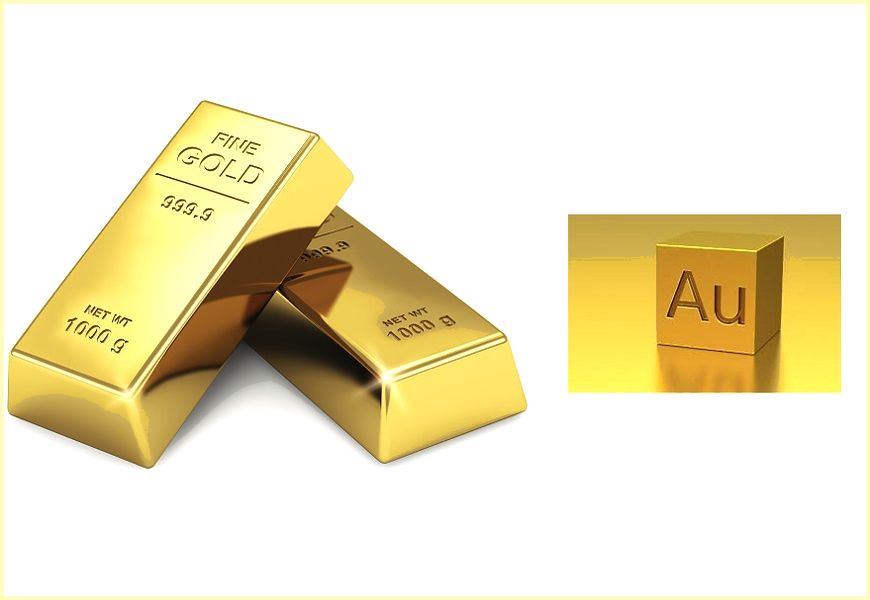
Used alloys with other metals
The alloy is metal mixThe aurum content is determined as a percentage. The mixture of components can be formed in the natural environment or with direct human involvement. The alloy is more suitable for working with precious metal. And conventionally it will be called as well - aurum, but in fact it is already another metal. The composition determines the area of application of the material, its appearance, as well as its hue (red, White, yellow, green et al.).
The content of ligatures and precious metal is determined by GOST.
Precious metal extraction technologies
The ancient and modern history of gold is varied, revealing several methods of mining Au. Different manipulations are performed to make it emerge from the earth's crust. Au is not extracted from large bodies of water - it is unjustifiably expensive and the result is weak. The main sources are the surface and deeper layers of the soil. To raise the precious metal from the depth and to purify it from impurities, several basic technologies are used.
Sliching (washing) - an ancient method of washing gold sand
This method is the best if it is necessary to carry out prospecting to find an aurum. It is based on sampling shallow bodies of water (rivers, streams). Particles of the precious metal begin to spread due to the destruction of the rocks, of which the steel is a part. This is facilitated by shallow bodies of water - rivers and streams. Aurum looks like shiny yellow particles. This is schlich, indicating that there is precious metal here. This peculiarity explains why Au is found mainly in the Urals and other northern regions of Russia.
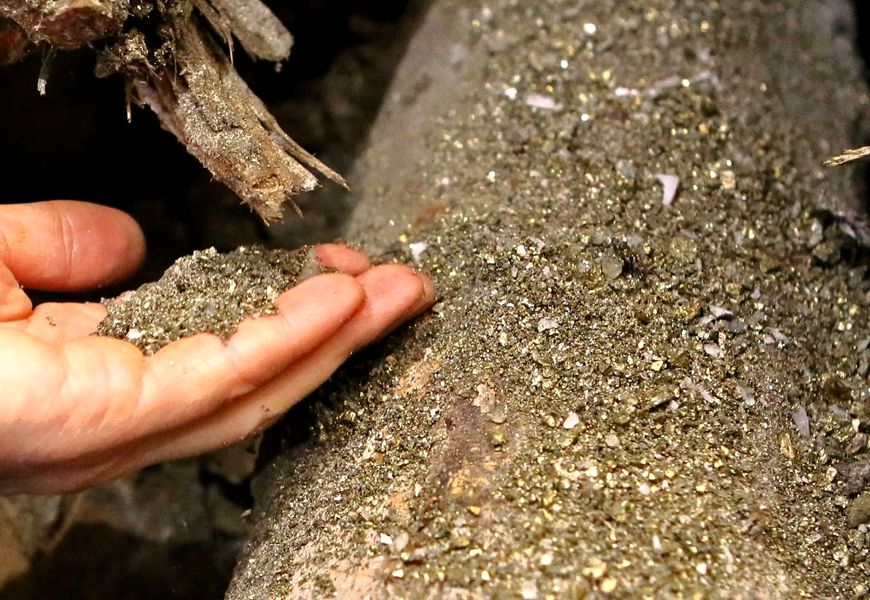
Amalgamation with mercury
The method is based on the ability of the aurum to react to the effects of mercury. To obtain precious metal from waste rock, you have to take the process thoroughly. It requires wetting aurum with liquid metal, and the result will be interesting: amalgam is formed, which allows you to disperse Au and later restore its original shape.
Cyanide production - extraction of gold from ore
The process is called leaching. It should be remembered that aurum is resistant to oxidation at normal temperatures. Given these properties of gold, it is possible to extract the precious metal from rock by exposing it to cyanide solutions. The metal free of impurities is restored to its original properties.
A disadvantage of the method is the possibility of obtaining less precious metal than the rock originally contained. In addition, cyanide is used to work with low-grade ore.
Metal cleanliness index systems
The ancient history of gold does not include the use of methods to assess the quality of the precious metal. Previously, no such methods were used. Only a few centuries ago began to apply systems to determine the purity of aurum. And one replaced the other. New methods began to appear and their emergence was connected with the changes in the politics and economics of states.
Carat system
The earlier history of gold contains information about the use of the carat system as the oldest. It is used in the United States and Europe. It is based on 24-karat alloy. This is the benchmark for the quality of the material. A pure metal ingot is assayed as a 24 carat assay material. When the amount of precious metal decreases, the amount of additives increases. Then the assay of the material will be less than 24 carats.

Metric system
The fraction of aurum is estimated as the number of milligrams per 1 gram of pure metal. Such manipulations in determining the content of impurities began to be done in the 19th and 20th centuries. The metric system was introduced earlier in Europe and later in the USSR.
Spool system
The method was used from the late 18th until the middle of the 20th century. In doing so, emphasis was placed on the measure - the Russian pound containing 96 gold pieces (the reference value). The less aurum the metal contains, the lower the assay. Accordingly, the designation 96 should be read as pure Au.
Table: correspondence of samples of different systems
Depending on the properties and composition of the precious metal, they determine not only the cost of the finished items, but also the rules for handling them. For example, pure metal requires more careful treatment, because it is exposed to mechanical stress. Jewelry for men and women may contain a minimum of aurum. In this case, the assay is the lowest.
The best option is jewelry that contains 50-70% of precious metal. These can be bracelets, earrings, pendants in the form of the zodiac sign, wedding rings, and even money (when the Golden Horde existed, and later in Russia, coin minting was in demand).
Today there are many payment systems, as well as ways to determine the purity of gold affecting the currency: Carat, metric. To be able to determine your own sample, you need to study the table.
| Metric | Carat | Spooler |
|---|---|---|
| 1000/999 | 24 | 96 |
| 958 | 23 | 92 |
| 875 | 21 | 84 |
| 750 | 18 | 72 |
| 583/585 | 14 | 56 |
| 500 | 12 | 48 |
| 375 | 9 | 36 |

Gold applications
Luxury items (such as the Rockwell plate) are less in demand than other items. More often there is a need for jewelry, electrical parts. Gold is used when creating different types of coatings from this material.
The main areas of application of the precious metal:
- The jewelry industry: a large amount of jewelry is produced, among which there are massive as well as almost transparent (openwork) pieces;
- the object of investment: aurum for a long time determines international relations, affects the value of the currency, while the price of gold is constantly growing, but slowly, so earn the difference between the cost of buying and selling is possible only in decades - it is an investment in the future;
- monetary circulation - earlier coins were used as currency, today they are not used, but the aurum continues to participate in the monetary circulation, only doing it indirectly;
- industry: they make various parts of mechanisms, elements of printed circuit boards, etc;
- pharmacology: Au is included in the composition of drugs of some species;
- Dentistry: They perform prosthetics using gold;
- Cosmetology: colloidal gold is included in cosmetics, when it was possible to discover this property of Aurum, it shocked the world of professional cosmetics, because the precious metal benefits the body;
- food industry: Gold particles are used as an additive (E175), but it is used infrequently.
Determination of the world value of gold and its status in the stock market
Aurum affects the price of various currencies. The stock exchanges set the price of precious metals on a daily basis, which allows us to track the slightest changes. However, no one expects strong fluctuations, given that gold has the status of a safe asset, which means that a steady rise in the price of Au is planned. But the value does fluctuate, which depends on external factors, among them: the amount of mined metal, inflation, supply and demand for Au in different forms (jewelry, bars, coins, etc.).
Video: Gold - 79th element in the Mendeleev Table
Interesting facts about the noble metal
Anyone who has taken up the study of the "magical" properties of aurum can learn many unusual things about the precious metal. Interesting facts about gold:
- Au is sparsely distributed in nature, the main part is hidden deep underground;
- amount of gold in the lithosphere - 4.3-10-7%;
- Even seawater contains the precious metal, but its proportion is even lower (in 1 liter of water - 4.3-10-9%);
- plants get some aurum from the soil as they grow;
- The main reserves of the precious metal are concentrated in Russia, Canada, and South Africa.
When examining information about gold alloys on the websites when selecting products, you need to understand that different materials are offered. They may contain more/less Au. The difference should also be written about on the websites of the manufacturers of jewelry and other valuable gold items to avoid buying a fake.
